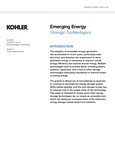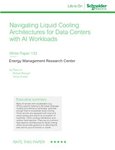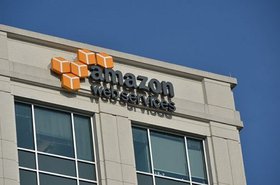The exponential growth of artificial intelligence (AI) offers exciting prospects for the future and countless potential benefits across industries, including data centers. However, the evolution of AI comes with significant challenges for the data center industry, not the least of which are the conception and implementation of assets needed to encourage further progress.
The challenges of aging data centers and broad industry aspirations to achieve greater sustainability standards are significant, but this is inspiring innovative thinking for operators, suppliers, and others. When it comes to the enormous power loads required and the ability to cool computing infrastructure, the industry’s best-and-brightest are exploring new avenues to take concepts from the drawing board to safe, smart, and sustainable practical application in data centers.
A 2023 McKinsey & Company study projects we’re going to need about 35GW of cloud data center power capacity by 2030 to meet AI demand compared to approximately 17GW required at the end of 2022. Obviously, that means many more data centers must be built and operating in a short timeframe. Fundamentally, because the load profile is not flat, consistent, and static like most data centers today, it’s important most are new constructions, rather than repurposed facilities.
Another big challenge is increased rack density, or the total kilowatts of IT equipment in a rack, and therefore the amount of heat that needs to be dissipated. Today, most colocation data centers are about 7kW per rack. Some of the hyperscales have higher, 30-50kW racks, but the projections for AI put the numbers from 80-to-150kW per rack. In fact, Cyrus One recently announced a data center design that can handle 300kW per rack. With that much power needed in small spaces, existing data centers cannot be repurposed effectively.
Considering the demand AI will place on the power grid, utilities don’t have an extra 30GW to deliver at present. Combine the projected generating capacity needs and the push from fossil fuels to renewables, power providers – against a backdrop of aged power grid and transmission systems that are inadequate to meet long-term AI demands – need optimization on a grand scale in a short time.
Industry Dynamics
From the perspectives of rack density and sustainability, the data center industry’s understanding is evolving as we learn more about applying AI. The consensus seems to be, when AI goes into a learning mode, we’re going to observe several rapid load steps where the equipment will be operating around 50-to-70 percent and then ramp up to 100 percent. It’ll stay there from 50-to-100 milliseconds, drop back down, then repeat that sequence two-to-four times per minute for 10 minutes.
That puts a great deal of stress on systems and a generator can’t tolerate a step load of that magnitude. However, it presents a great opportunity for innovation.
Potential Solutions
New products and solutions will generate change to meet the increasing demands on sustainability standards for power production and management. For instance, increased rack density is a function of AI growth, but it also adds pressure from a sustainability perspective. If we put more power density in smaller spaces, we will use less steel, concrete, and other building materials and reduce carbon emissions in turn.
Further, many data center operators are opting to install low voltage uninterruptible power supply (UPS) systems, switchboards, and distribution equipment in modular e-Houses (switch gear houses) outside of buildings. Having a manufactured solution onsite offers several advantages for sustainability; it limits and speeds construction and offers better waste recycling.
Liquid cooling will continue to grow in capacity beyond the systems we use at present because of rack densities. For years, critical power to IT equipment was most important in a data center. Going forward, cooling is going to be a function that is equally important. If you stop liquid cooling to a chip as it ramps up and down, you lose control of the cooling when it ramps up again. There are several possible solutions we are evaluating to help move power around and shift impact off of existing topology so it won’t be solely on the generator and/or the utility.
It’s a very exciting time to be in the data center market because of forthcoming innovations we anticipate to address optimization coupled with exponential AI growth. Data centers have historically adapted to change as new technologies have evolved. Those who are likely to enjoy the greatest success amid the challenges of AI are the forward-thinkers who embrace the opportunity, think outside the proverbial box, and seek ways to solve problems without increasing costs or sacrificing reliability. From a macro perspective, the associated innovations-to-come have the potential to go well beyond data centers into other markets and industries seeking to leverage the many benefits of AI to advance business objectives and doing so in ways that promote sustainability.








